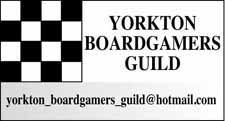I must say discovering interesting abstract strategy games is a near passion for me.
So when I found the game Lanko from Polish designers Andrzej Korczak and Krystyna Korcak Landowska I was immediately curious.
Lanko, which was first released independently by the designers in 2006, is intriguing from the time you open the box.
To start with for an indie release the pieces, while not large, are wood, and to me that just makes any game, and abstract strategy games in particular cooler. Injection-molded plastic pieces have never been something that has impressed me.
On the other hand I love the aesthetics of wooden pieces.
Lanko comes with a pretty standard pressed-cardboard game board. It is however double-sided. Lanko can be played on a square field, something akin to a checker board, or it can be played on a circular board.
Circular boards in terms of abstract strategy games have often been tried, although I can't think of one which has proven particularly popular, or even one which has gained a devoted following.
For that reason alone I suggest exploring Lanko on the square-gridded board first to give it a fair appraisal, since circular board play seems to often bog down in any game.
Lanko does owe much to checkers in terms of basics.
On the square board there are 103 smaller squares, alternating two colours. The game plays out primarily on the dark squares, as in draughts, but with Lanko some special light-coloured squares play a role.
Players have three types of pieces, large castles, small castles and pawns, each with their own value.
In the centre of the board are four 'end squares' which are crucial to the game. You want to get a piece on the end square where its value triples at game end. Obviously the best choice would be a large castle since it is worth more to start with.
To move into an end square you have to first land on a 'maneuver square' adjacent, which will allow you to slide to the light coloured 'end square' on the next turn.
The combo of moves needed affords an opponent a chance to defend if he is positioned well.
You move your pieces toward the centre, some moving only space to space, others with the ability to jump your own pieces (think Chinese checkers) to gain ground.
As in checkers you can also jump an opponent's piece, landing in an empty square directly behind, thus capturing it and removing it from play.
The game ends when the four end squares are occupied, or it is obvious no castles can ever get to an end square not already occupied.
You then add up the values of pieces remaining on the board to determine a winner.
The game allows for two-player head-to-head play, but also four player action in teams of two. A three player rule option is included, but I'll caution rarely do three player abstract strategy games work.
On the square board there are a lot of options, and that creates levels of strategy to delve into.
Given time to explore regularly Lanko can be a fine game option.
And then there is the circular board, which plays quite a bit differently, but I see it as more of an occasional play diversion than the real meat and potatoes version on the square side.
Check it out at http://lanko.com.pl/



